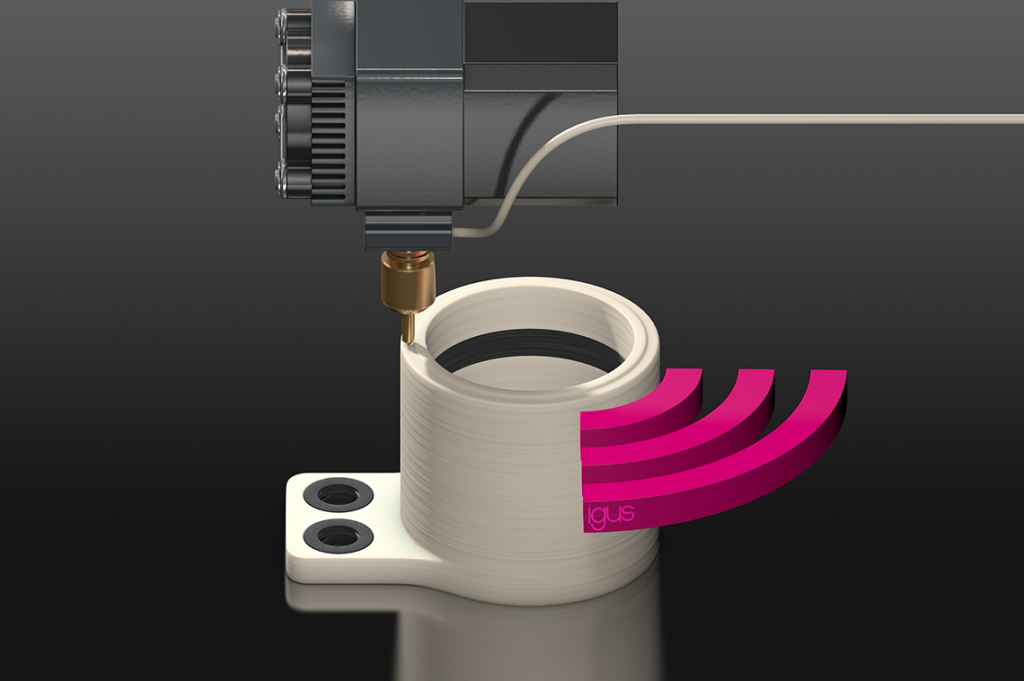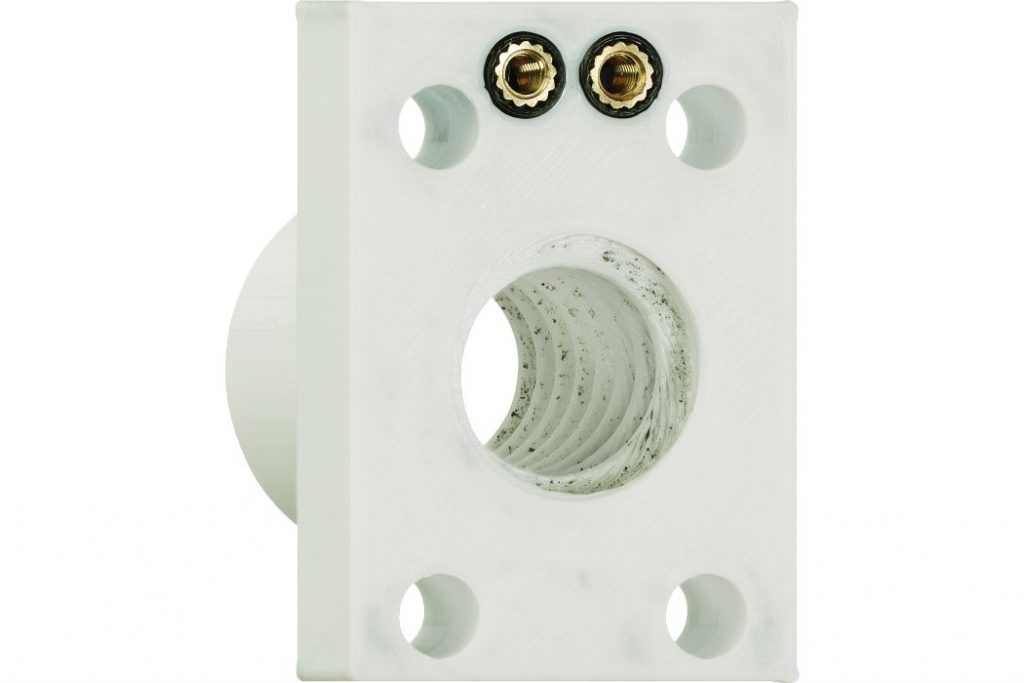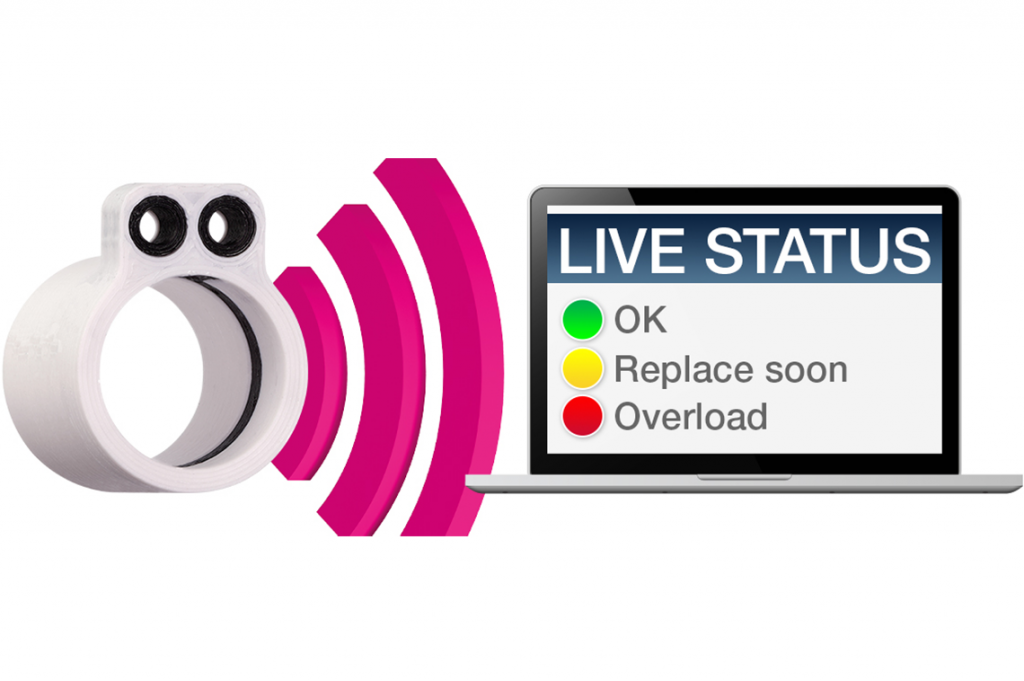Three areas of application for 3D printing with sensors
igu-blog-adm | 24. February 2021
Additive manufacturing has already proven itself in many areas, as it can be used without tools and using diverse materials for many different applications, making them more cost-effective and flexible. Now a new form of 3D printing is also coming to the fore, where it is possible to integrate different materials in a single printing process. This process also makes it possible to integrate sensors directly into components marking the birth of compact, intelligent systems without major production or assembly effort. In addition to research in the medical sector, which is devising sensors for monitoring various vital parameters of patients, the use of sensors for industrial purposes is becoming more popular. Meanwhile, igus GmbH prints abrasion-resistant wear parts using the fast and cost-efficient 3D isense process. These components will alert you when they have reached their wear limit and can also warn you of overload. This makes them attractive for predictive maintenance of a wide variety of systems.

Intelligent 3D printing
The special feature of additive manufacturing of mechatronic systems is the printing with different materials. For example, Fused Filament Fabrication (FFF) printers print using different plastic filaments with different print heads. Other materials are also used here, such as electrically conductive or soft magnetic materials, as well as shape memory polymers.
A sensor is a component that detects events or changes in its environment and sends this information to a networked receiver. Due to the possibility of processing different materials in 3D printing, many research groups see opportunities for developing a wide variety of sensors. The subject of this research is, for example, piezoresistive strips that are integrated into an Exo-Glove as strain gauges in order to be able to measure the resistance that arises when the fingers move. In addition, researchers at the Wyss Institute at Harvard University have developed a so-called soft robot hand that can hold on to different objects based on the changed pressure and the resulting change in resistance at the integrated sensors. At the same time, the installation of different sensors at different points makes it possible to distinguish between strongly and weakly applied pressure. There are no limits to the variety of sensors: temperature measurements are also possible with the integrated sensors.

Sensor diversity as a breakthrough in medicine
In the medical industry, researchers are taking advantage of the opportunity to integrate sensors into small components at relatively low cost. A medical device called “portable technology” has been developed at the National Taiwan University. This involves placing a patch-like strip on the skin to monitor the patient’s vital signs. Not only is the pulse measured, but also the temperature and movement. The data can then be viewed via an app on a smart phone or tablet. Depending on the requirements, different sensors can be installed or removed. For example, there is a contact microphone that can record sounds of organs similar to a stethoscope. Researchers at the University of Minnesota see a major opportunity in monitoring, in particular during the ongoing pandemic. They are testing the 3D printing of sensors on living organs using motion capture, a tracking technique often used in film. In doing so, they hope to soon be able to monitor lung function more closely in patients who have contracted SARS-CoV-2 coronavirus.
Use in Industry 4.0
Research is also being conducted in the area of Industry 4.0. At igus GmbH, for example, intelligent wear-resistant parts are manufactured using multi-material printing, which can both report the reaching of their own wear limit and detect an overload of the component thanks to the integrated sensor technology. This is done by continuously measuring the electrical resistance in the sensor material. If this resistance changes, the sensors indicate that the component must be replaced. In the load measurement variant, the sensors are positioned between the layers of the wear-resistant parts in such a way that they can report a change in the load immediately. Overloading the component and faster wear is thus avoided. The intelligent 3D isense components ensure reduced maintenance and machine downtime.

The increased networking of products and machines in Industry 4.0 brings many advantages. Intelligent monitoring provides a precise overview of production, efficiency is increased, costs are reduced and resources are saved. This ensures a flexibility that does justice to the fast pace of the market and production. This flexibility is particularly supported in the production of components using 3D printing. The use of a wide variety of materials for numerous purposes, the production of which takes place without tools and saves resources, enables cost reduction and individual production and a high level of international competitiveness in the modern market.

